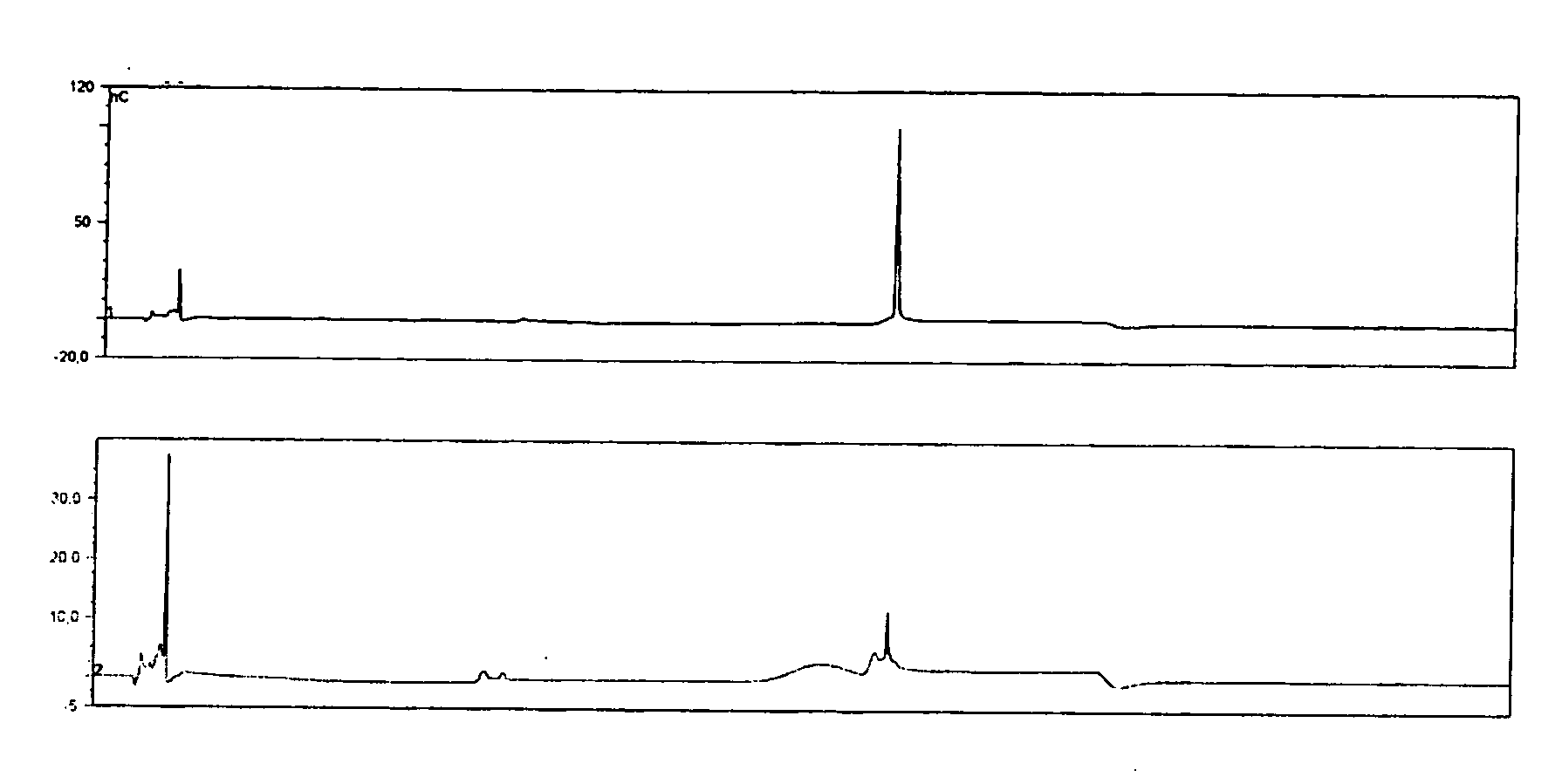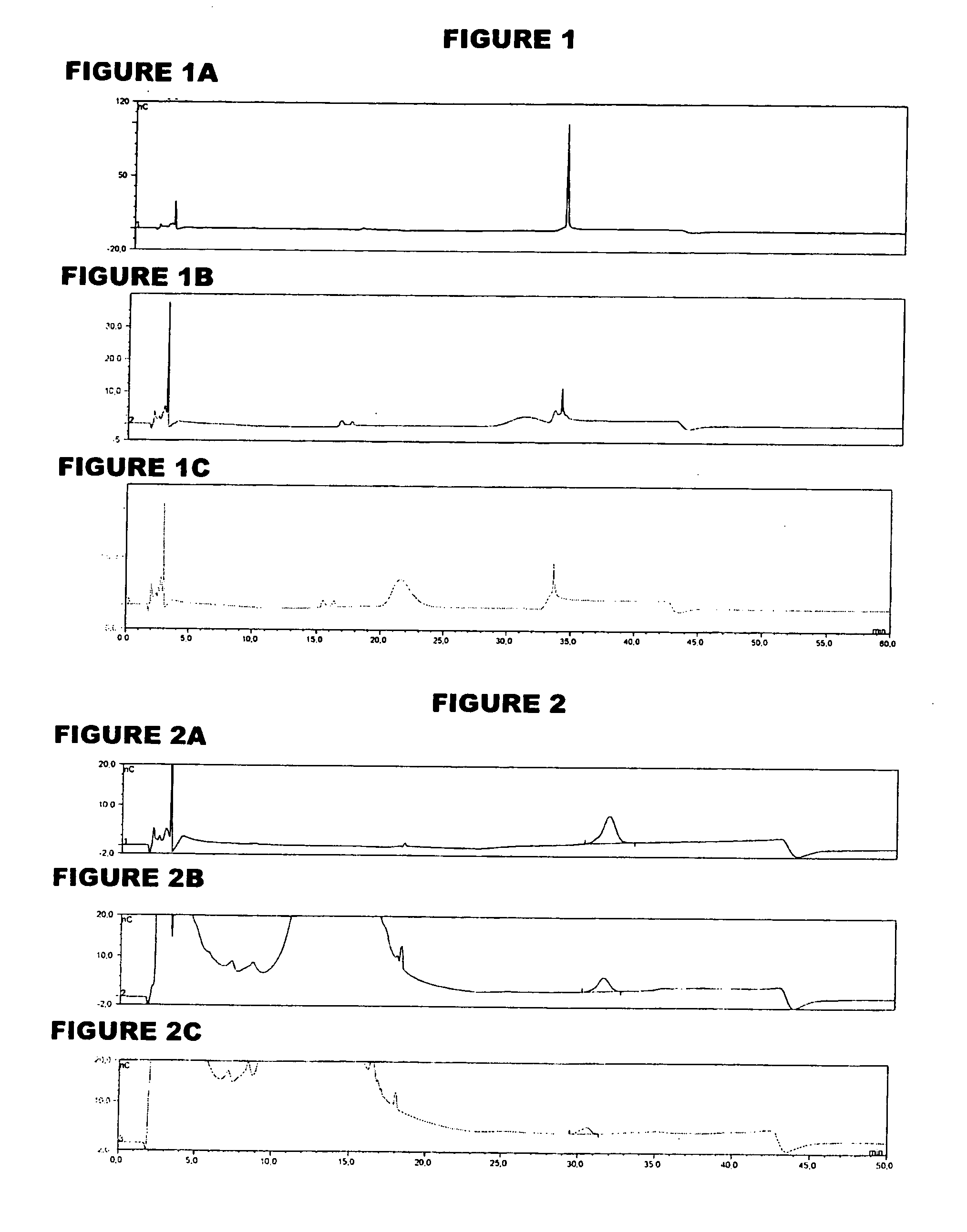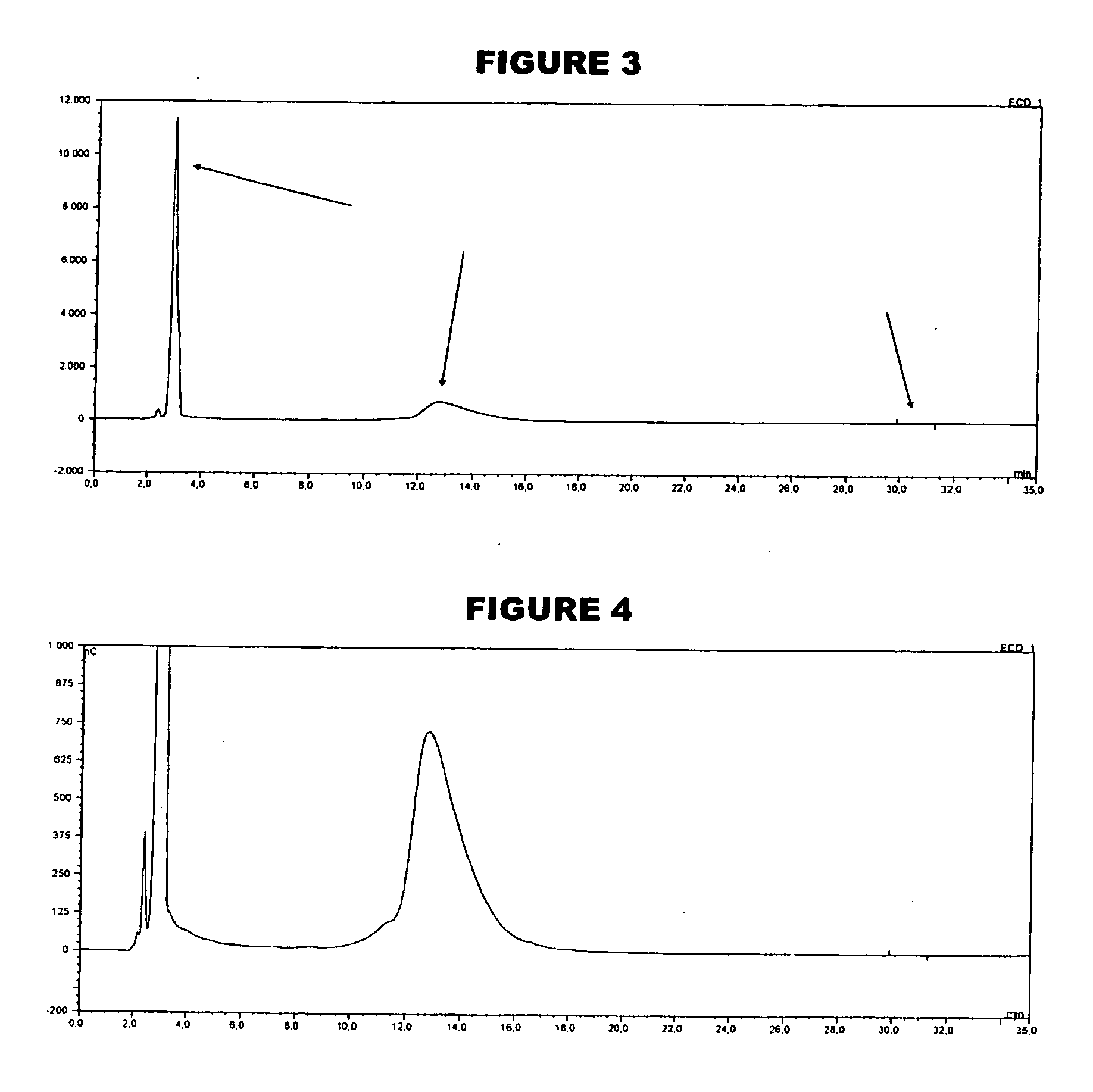Analysis of Mannosamine-containing Capsular Saccharides
a technology of capsular saccharides and mannosamine, which is applied in the field of composition analysis and quality control, can solve the problems of undesirable high levels of unconjugated cps, and achieve the effects of high separation, excellent mass transfer, and high resolution chromatography
- Summary
- Abstract
- Description
- Claims
- Application Information
AI Technical Summary
Benefits of technology
Problems solved by technology
Method used
Image
Examples
Embodiment Construction
[0057]An analyte of interest is a MenA glycoconjugate that had been lyophilized using sucrose as a stabilizer. Compared to the amount of MenA saccharide (μg), the sucrose levels were very high (mg). An early analytical method separated sucrose from the MenA saccharide by 1 k ultrafiltration, but saccharide recoveries were not always consistent. In the method of the invention, the MenA saccharide is instead assayed as follows: TFA hydrolysis; inject onto PA10 CarboPac column; separate and detect by HPAEC-PAD. This method detects total MenA saccharide; if only unconjugated material is to be detected then solid phase extraction can first be used to remove conjugated MenA. Compared to the previous method, it avoids the slowness and inconsistency of pre-ultrafiltration. It also avoids the need for neutralization of the MenA sample after acid hydrolysis.
[0058]The most preferred HPAEC-PAD method is as follows. The Dionex chromatography system was equipped with a CarboPac PA10 analytical co...
PUM
 Login to View More
Login to View More Abstract
Description
Claims
Application Information
 Login to View More
Login to View More - R&D
- Intellectual Property
- Life Sciences
- Materials
- Tech Scout
- Unparalleled Data Quality
- Higher Quality Content
- 60% Fewer Hallucinations
Browse by: Latest US Patents, China's latest patents, Technical Efficacy Thesaurus, Application Domain, Technology Topic, Popular Technical Reports.
© 2025 PatSnap. All rights reserved.Legal|Privacy policy|Modern Slavery Act Transparency Statement|Sitemap|About US| Contact US: help@patsnap.com



